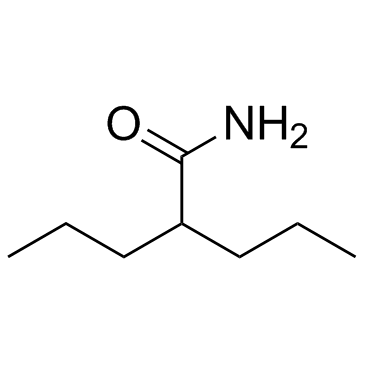Histone deacetylases are required for amphibian tail and limb regeneration but not development.
Amy J Taylor, Caroline W Beck
Index: Mech. Dev. 129(9-12) , 208-18, (2012)
Full Text: HTML
Abstract
Amphibians such as Xenopus laevis and Ambystoma mexicanum are capable of whole structure regeneration. However, transcriptional control over these events is not well understood. Here, we investigate the role of histone deacetylase (HDAC) enzymes in regeneration using HDAC inhibitors. The class I/II HDAC inhibitor valproic acid (VPA) inhibits tail regeneration in embryos of the anuran amphibian Xenopus laevis, confirming a recent report by others (Tseng et al., 2011). This inhibition correlates with a sixfold reduction in endogenous HDAC activity. VPA also inhibited tail regeneration in post-refractory stage Xenopus larvae and larvae of the urodele A. mexicanum (axolotl). Furthermore, Xenopus limb regeneration was also significantly impaired by post-amputation treatment with VPA, suggesting a general requirement for HDAC activity in the process of appendage regeneration in amphibians. The most potent inhibition of tail regeneration was observed following treatment with VPA during the wound healing, pre-blastema phase. A second HDAC inhibitor, sodium butyrate, was also shown to inhibit tail regeneration. While both VPA and sodium butyrate are reported to block sodium channel function as well as HDACs, regeneration was not inhibited by valpromide, an analogue of VPA that lacks HDAC inhibition but retains sodium channel blocking activity. Finally, although VPA is a known teratogen, we show that neither tailbud nor limb bud development are affected by exposure to this compound. We conclude that histone deacetylation is specifically required for the earliest events in appendage regeneration in amphibians, and suggest that this may act as a switch to trigger re-expression of developmental genes.Copyright © 2012 Elsevier Ireland Ltd. All rights reserved.
Related Compounds
| Structure | Name/CAS No. | Molecular Formula | Articles |
|---|---|---|---|
 |
Valpromide
CAS:2430-27-5 |
C8H17NO |
|
The synergistic effects of DNA-damaging drugs cisplatin and ...
2015-07-01 [Int. J. Oncol. 47 , 343-52, (2015)] |
|
Amidic modification of valproic acid reduces skeletal terato...
2004-02-01 [Birth Defects Res. B Dev. Reprod. Toxicol. 71(1) , 47-53, (2004)] |
|
Polycomb homologs are involved in teratogenicity of valproic...
2004-11-01 [Birth Defects Res. A Clin. Mol. Teratol. 70(11) , 870-9, (2004)] |
|
Mood-stabilizers: the archeology of the concept.
2003-12-01 [Bipolar Disord. 5(6) , 446-52, (2003)] |
|
Mood stabilizer augmentation in apparently "unipolar" MDD: p...
2005-02-01 [J. Affect. Disord. 84(2-3) , 243-9, (2005)] |